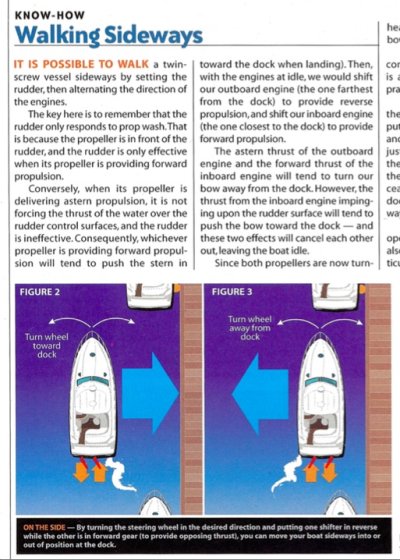Some openings are just irresistable!

But on a serious note...
It's absolutely essential that spouses and SOs learn at least enough to be able to use the VHF and take control of the helm--if only to pull the throttle(s) back to idle and take the boat out of gear!--in case of emergency. Better yet, to be able to bring the boat to the nearest safe harbor and put it alongside a dock or T-head where an ambulance can take the stricken or injured person off the boat.
For 3+ years my husband fought a losing battle with bone cancer. He LOVED our boat! In the last year of his life, if I hadn't known how to handle it, we'd have had to become landlubbers.And it's a good thing I did because we did have a couple of "get him ashore and to an emergency room quickly" experiences that weren't life threatening yet, but could have become so. I've heard too many stories of wives who became totally hysterical...could only scream into the VHF mike, didn't even know enough to let go of the transmit button, much less how to stop the boat or even give anyone their location...when their husbands collapsed out on the water. Anything can happen out there to the oldest OR the youngest of us, and both of you need to be prepared to deal with it!
The Power Squadron is one of several organizations that teach "pinch hitter" skills to wives and SOs...that instruction--and more--is often available at rendezvous. Do yourselves a huge favor and give your admiral the encouragement--and courage if necessary!--to learn how to be a real deck hand and even a relief skipper. Her having those skills COULD save both your lives some day...meanwhile they're wonderful confidence builders that add a whole lot more fun aboard for her than only being your "step and fetch it!"
I'll get off my soapbox now...



